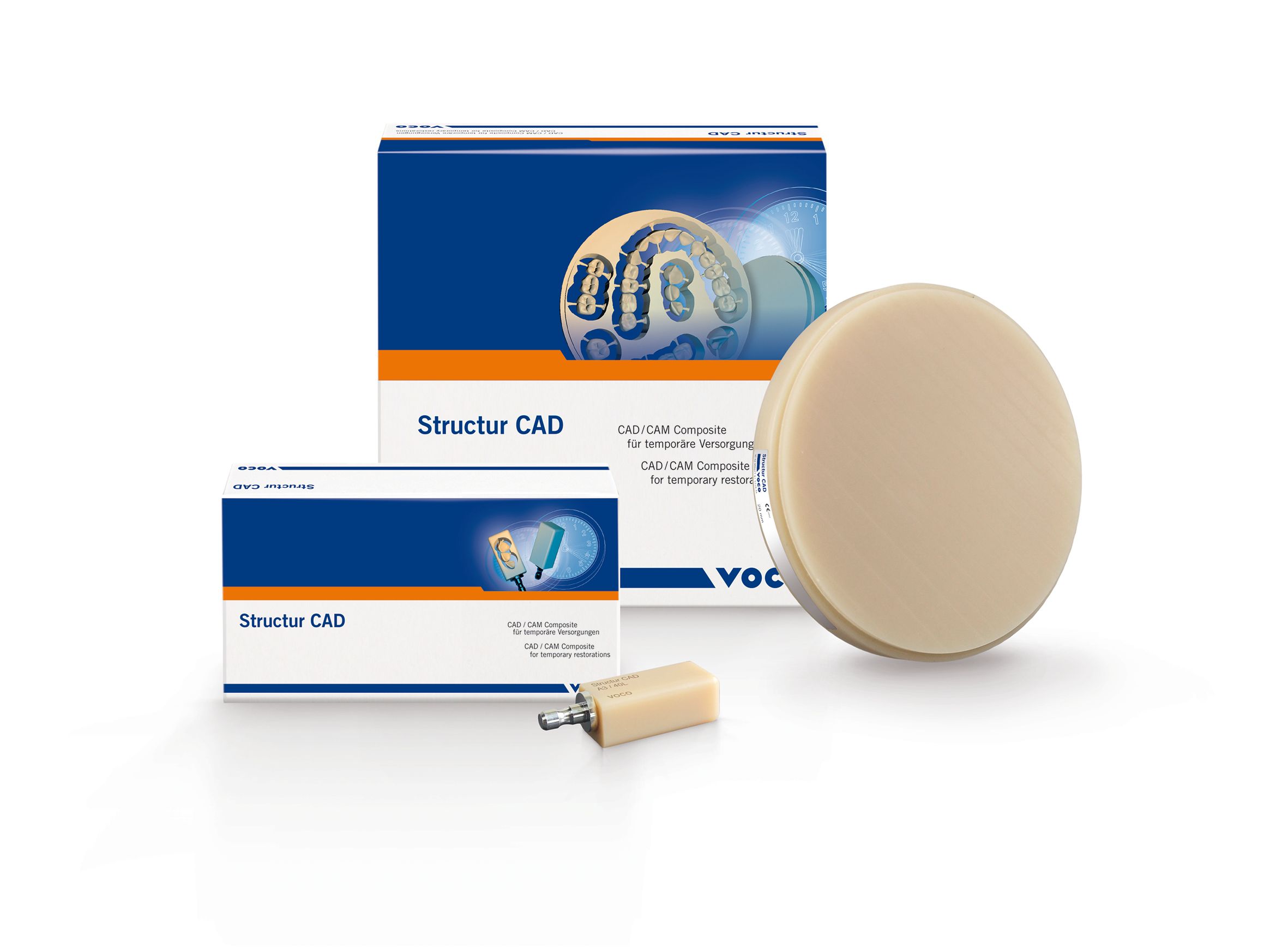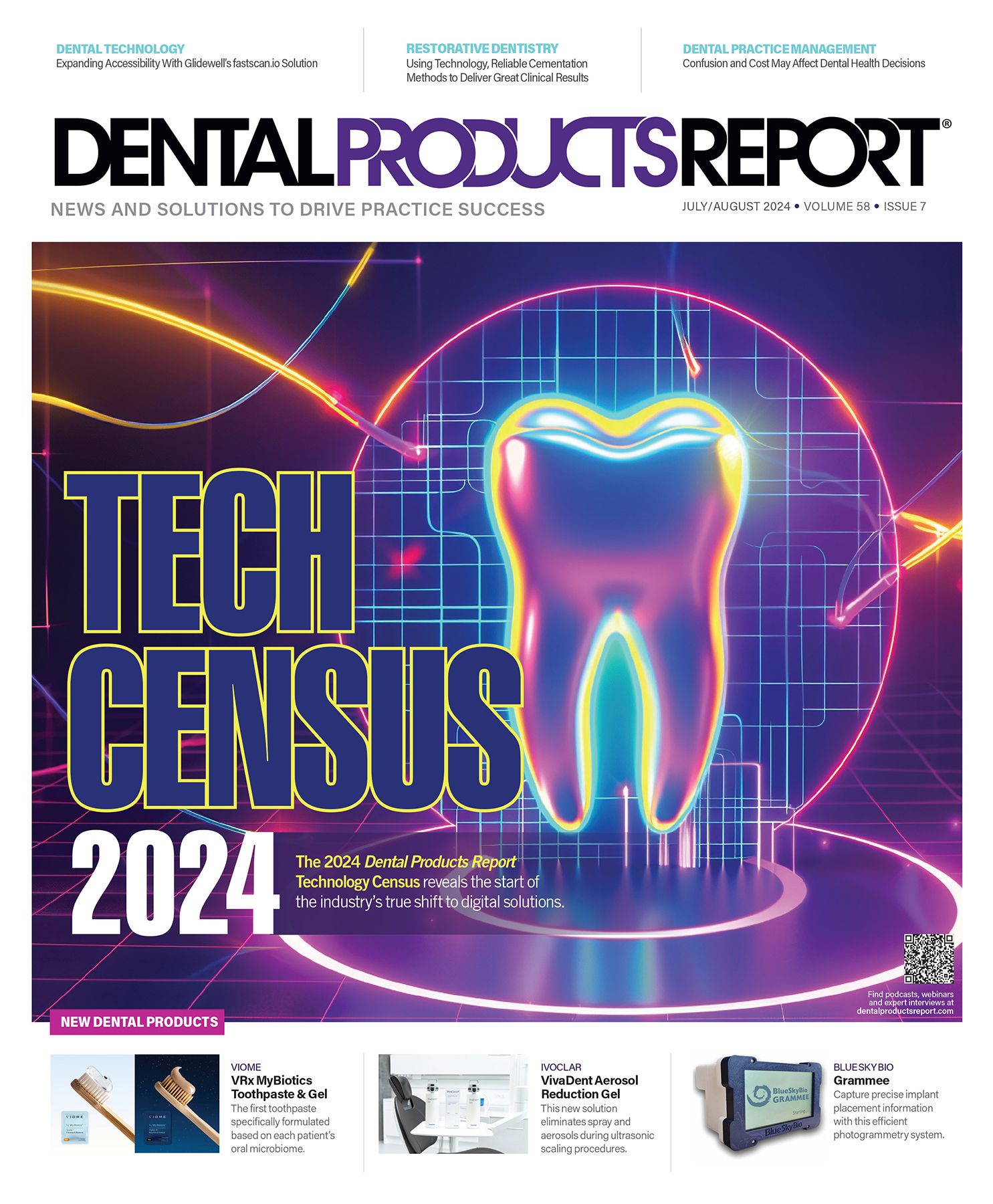• Objective: Outline a phased treatment approach for full-mouth rehabilitation.
• Methods: Initial assessment and temporomandibular disorder workup, treatment planning, and execution using various dental technologies and VOCO products.
• Results: Improved functionality, patient satisfaction, and esthetic results.
• Conclusion: A phased approach can help clinicians verify the patient’s vertical dimension of occlusion and functional occlusion as well as meet the patient’s immediate and long-term goals of a more esthetically pleasing smile.
Introduction
• Background information: By addressing both functional and esthetic concerns in dental practices, we not only create long-lasting restorations but also correct early temporomandibular disorder dysfunction.
• Problem statement: Loss of posterior occlusion and its impact on patient’s oral health, health outcomes, and advanced premature aging.
•Purpose of the study: The article aims to present a viable treatment planning and execution method that accommodates the patient’s temporal and financial constraints.
• Significance of the study: This approach can transform patient outcomes by allowing flexibility in treatment planning.
Patients present to our practices with different goals. It could be to relieve jaw pain, fix chipped teeth, chew better, have a brighter smile, or feel more confident. Many times, a patient’s chewing function is what leads them to the desire for improvement. If a patient has a chewing pattern or occlusal alignment that makes it difficult to fit their posterior teeth together, the resulting chipping or wear on the front teeth drives them to us for help. This was the case in this situation.
Our patient presented with loss of her posterior teeth, which forced her to move toward chewing on her anterior teeth. Front teeth are supposed to behave like scissors and not potato mashers, and when flipped, they begin to have excessive breakdown. This premature and excessive wear can lead to further loss of tooth structure as it becomes thin, brittle, and possibly sensitive. To address that anterior breakdown, we first needed to recreate a posterior stop and build occlusion. Is it easier to do everything all at once? Absolutely. Is that always possible? Absolutely not. For patients who may need to break treatment into sections, we as clinicians need a way to offer a solution so that treatment can be planned comprehensively yet phased to achieve the desired outcome at the pace the patient desires.
Structur CAD
Available in both discs and blocks, Structur CAD from VOCO is a strong and esthetic composite material for milling long-term temporary crowns and bridges. Restorations fabricated from the material can serve for up to 3 years. The material is said to offer a high degree of edge stability after milling. It does not require firing nor glazing and can be polished quickly to provide natural looking fluorescence and esthetics. The temporary restorations fabricated with Structur CAD can be customized and repaired using conventional dental composites. The material can be cemented using either temporary cement or a longer-lasting dental adhesive, and it does not require an MMA primer. Available in shades A1, A2, and A3, Structur CAD can be purchased in size 40L blocks or 20-mm discs.
VOCO America, Inc
888-658-2584
voco.dental
For this specific case, our patient needed to restore proper occlusion, as she had lost most of her posterior occlusion earlier in life. To determine where the posterior teeth would go, we first needed to design the anterior teeth in our patient’s mouth. Ideally, she would have had her canine edge position set to zero (the cuspid tips placed right behind her lip line) followed by her centrals having 1 to 2 mm of display in the repose position as well (Figure 1). Our patient presented with moderate tissue display in her Duchenne smile, which we also incorporated into our design (Figure 2). Once we established the incisal edge position, we could then design her tissue architecture balanced with the width of her incisors. From there, we built the mock-up for her upper posterior teeth horizontally using the Kois glasses to level her plane of occlusion.
When phasing treatment such as this, we design from front to back but build from back to front. If we had performed her anterior restorative dentistry using her current occlusion, she would ultimately break any composite or ceramic off. Maximum intercuspation for her posterior lower teeth were directed by using a Kois Deprogrammer because she had lost her ability to find a repeatable bite. After wearing the deprogrammer for 2 weeks, she had a repeatable stop on the deprogrammer platform and demonstrated relief of her temporomandibular disorder symptoms (Figure 3). For this patient, we placed implants on both sides of her upper arch (using Neodent by Straumann) and allowed the implants to integrate while aligning her lower anterior teeth. Once her ClearCorrect® (Straumann) aligners were completed, she had an appropriate arch form for our upper anterior restorations. She was then ready for permanent posterior temporaries. This can be done using Grandio® blocs by VOCO if your patient is planning to have a temporary occlusion for a few years; however, in this case, we only wanted the temporaries to last until we were able to verify her new occlusion was comfortable and stable. This is more economical with Structur® CAD, which is a milled temporary material available in blocks or discs, and injectable material. When we used a hybrid of milled temporaries along with the mock-up, this allowed us to build an injected Structur 2 temporary crown on her remaining posterior tooth (Figure 4).
Once all posterior milled Stuctur CAD implant crowns were seated or prepared and temporized, we could move to the upper anterior teeth. We created a posterior stop along with an anterior open bite that would provide space for restorations that increased length and reestablished a facially generated incisal edge position. The patient was ready for injection composites using GrandioSO flow in shade BL on the anterior teeth (Figure 5).
Structur 2 SC
VOCO's Structur 2 SC is a fast-setting, temporary BIS-acrylic crown and bridge material designed for convenience and efficiency. Packaged in a 1:1 cartridge or QuickMix syringe, Structur 2 SC simplified mix ensures easy handling and application. This material boasts exceptional strength and wear resistance, providing durable temporary restorations that can withstand the rigors of daily use. Its quick setting time allows for a comparatively expedited provisional workflow, improving overall productivity.
Structur 2 SC offers excellent marginal integrity and fits seamlessly, ensuring patient comfort and satisfaction. Its natural esthetics with fluorescence blends well with existing dentition, making it an ideal choice for anterior or posterior provisional restorations. Additionally, Structur 2 SC can be easily polished and adjusted, ensuring a smooth, professional finish every time. For reliable, efficient, and esthetically pleasing temporary restorations, VOCO's Structur 2 SC exceeds expectations.
VOCO America, Inc
888-658-2584
voco.dental
Now we have a patient who has a full set of teeth using milled Structur CAD restorations in the posterior and injected GrandioSO flowable composites in the anterior to create a beautiful full-mouth rehabilitation. This gives us the freedom to advance her to ceramic restorations in any order. We could even phase her right side and left side in the posterior dentition.
This patient felt great with her new vertical dimension of occlusion and functional occlusion, meaning no jaw or masseter symptoms. Speech sounds were ideal, with no lisping, and she loved her new smile. She could stay in these restorations, and we have the ability to do a section each year for the next 3 years.
As you can see, the process can be simplified and systematized to create an outcome and pathway that work for a patient of any financial background and any treatment plan. When you have only a hammer, everything looks like a nail, and when you have a full armamentarium, you can treat the patient and the disease.



